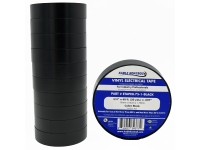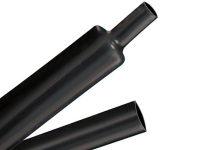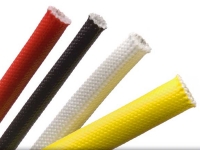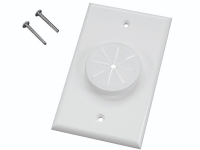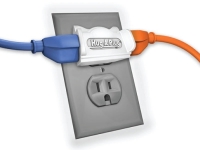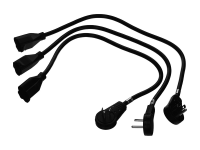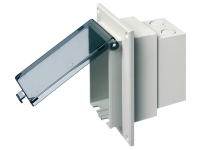Power & Electrical Supplies
Electrical Supplies & Power Solutions For Industrial & Home Use
Meeting all your electrical supply needs, including cords, outlets, receptacles, fuses, power supplies, power strips, flooring & everything in between
Additional Information
Power & Electrical Supplies
For the electrician who’s time is extremely valuable and wants a “one-stop-shop’, CableTiesAndMore offers many electrical supplies often required for electrical installation. Our high quality and reasonably priced products such as electrical tapes, cable ties, heat shrink tubing, wire nut connectors are an electrician or handyman’s everyday staple.
Equipment Checklist: 7 Essential Electrical Supplies to Have
You’ve put it off long enough; your partner has asked you to do it a million times, you’ve run out of excuses, and now you’re finally ready to face it. You’re armed with some YouTube tutorials and all the confidence you can muster. You’re going to fix that one outlet in your kitchen that doesn’t work.
But before you face off against that outlet, you’re going to need the right tools for the job. Not only will having the right tools make your project easier, it will also keep you safer while you’re working. Read on to discover the equipment supplies you’ll need before you tackle electrical projects.
Hand Tools
It may sound basic, but the first power and electrical supplies you’ll want to get for your project are a set of screwdrivers. We’ll get to the wire crimpers and voltage meters and all that later. But first, you have to be able to get the plate off the outlet to do start doing anything with the wiring.
You should have a set of Phillips-head screwdrivers, as well as a set of flat-head screwdrivers. You should have a few different lengths since you don’t know how far into a box you’ll need to reach. And you should have a few different head sizes that work on different size screws.
Allen Wrenches
Allen wrenches are another electrical supply that will help you get access to your home’s wiring. These tools come in sets and are bent into an L shape. They are hexagonal and have the unique shape they do to allow you to get the right amount of reach and leverage for loosening the fastener.
Allen wrenches come in two sets of sizes: metric and U.S. You should have a set of each with a variety of sizes. They’ll be helpful for taking down light fixtures, ceiling fans, and other such fixtures.
Level
If you’re installing an outlet or light switch, the second thing you need to do (after making sure you don’t get electrocuted) is to make sure your box is level. If the box is uneven, your outlet is going to wind up being uneven, and that’s sloppy work. So one of the tools you need in your belt is a level.
You don’t need a giant level for little projects like installing an outlet, so get one that will fit in your belt. Torpedo levels are between six and twelve inches long and are great for working in tight spaces. This level will also come in handy when you’re doing other DIY work around the house.
Hammer
If you do any work around the house, you probably already have a hammer. It’s one of the most basic and versatile tools out there, and you’ll want to pull it out for electrical work, too. You’ll need it to anchor electrical boxes that come with nail-on brackets and to drive wire staples to anchor new wiring.
Hammers come in a variety of styles and weights, and you won’t need anything too heavy-duty for this job. A standard claw hammer will work fine, and something around one pound will be fine. You can even get away with something as small as an eight-ounce hammer since you won’t be doing any super heavy work with this.
Tape Measure
Tape measures are one of the most underappreciated tools in an electrical kit. When you’re doing electrical work around the house, you need to know where the studs are, how far above the floor your light fixture should go, where to place a new light fixture, and more. This is one of the tools you’ll use most when working on these projects.
You want to make sure you have a tape measure long enough to be able to center a light fixture in a large room. This means a 25-foot builder’s tape that you can get at your favorite electrical supplier is probably a good idea. These will be sturdy enough to support their own weight at long distances and will be marked in sixteen-inch increments as well as in feet since sixteen inches is the standard distance between studs.
Non-Contact Voltage Tester
We’ll start getting into the more specific power supplies with a non-contact voltage tester. This is going to be your best friend when you’re trying to suss out and fix wiring problems. These tools buzz, light up, or beep whenever you get them within a certain distance of something that has an electrical current running through it.
Do you have an outlet that isn’t working? You can hold the non-contact voltage tester up to see if it’s getting any current at all. These are also great for figuring out which parts of your house are on which breaker; have someone flip each breaker while you keep the voltage tester near a certain light switch or outlet, and figure out which breaker shuts off electricity to the outlet.
Wire Strippers
For safety reasons, electrical wires come coated in non-conductive plastic coatings. These coatings also help you tell which wires serve which purposes in your system. For instance, when you’re installing a new light fixture, you’ll twist the two white wires together, the two black wires together, and the two copper wires together.
But before any twisting can happen, you need to get the plastic coating off the end of the wires to get access to the actual metal inside. This is where your wire strippers come in. This tool cuts the plastic coating without damaging the wires and allows you to easily slide it off an inch or so of the end so you can attach new wires together.
Pliers
Pliers of all shapes and sizes are important tools in an electrician’s belt. It’s a good idea to have some tongue-and-groove pliers, some needle-nose pliers, and some linesmen pliers in your belt.
Tongue-and-groove pliers, also called channel lock pliers, can adjust to a variety of different widths, making them useful for plumbing projects. But they can also be great to tighten cable clamps, adjust expansion-type ceiling fan boxes, and remove knockouts from metal electrical boxes.
Needle-nose pliers taper to a very thin point at the end, making them great for getting in small spaces. These are very helpful for twisting wires when you’re making screw terminal connections.
Linesmen pliers are a variation on your standard set of pliers, equipped with a blunt end and a cutting blade. They’re great for twisting wires together and there’s a grip area between the handles for pulling wires.
Wire Cutters
Wire cutters are technically another variation on a pair of pliers, and you need to have them in your electrical tool kit. These pliers taper to a sharp point and have a cutting edge that runs all the way down to the tips of the jaws. Even though some other pliers come with a cutting edge built into them, trust us when we say you’re going to want a pair of these.
Because wire cutters are sharp all the way out to the tip, they make it much easier to get in and cut wires in tight spaces. Some of them also come with built-in voltage detectors to keep you from shocking yourself. And some models have wire strippers built-in as well so you don’t have to constantly switch tools.
Fish Tape
Fish tape is a tool that makes it easier to pull wire conductors through metal or PVC conduit. This tool looks like a wheel with a handle in the middle. A thin tape with a hook on the end protrudes from the wheel.
To use fish tape, you start at the far end of your conduit and thread the tape into it. When you get it passed through to the other end, you or a helper can twist your wires through the hook on the end of the tape. Then you pull it back through, carrying your wire conductor with it.
Voltmeter
Aside from a non-contact voltage tester, a voltmeter or multimeter is going to be your best friend for figuring out your electrical system. Like a voltage tester, this tool can tell you whether electrical current is running through a circuit. But unlike a voltage tester, it can also give you more information about the current that may be there.
A voltmeter can tell you how much current is running through a circuit so you can tell if there’s only a weak level there. It can also test amperage, resistance, DC voltage, and more. You’ll need to work with it some to figure out how to use it, but once you do, it’ll be one of your most valuable tools for electrical work.
Get Your Electrical and power Supplies
When you’re working on electrical systems, it’s important to have the right tools. You need to be sure to stay safe, and the easiest way to do that is to make sure you’re not trying to MacGyver a pair of wire cutters out of an old steak knife. Get your electrical equipment supplies together before you start your projects and you’ll be amazed how much easier they become.
If you’d like to get the best electrical equipment for your next project, check out the rest of our website at Cable Ties and More. We have a huge inventory and fast shipping to meet all your wire management needs. Check out our inventory of tools and start working smarter today.


